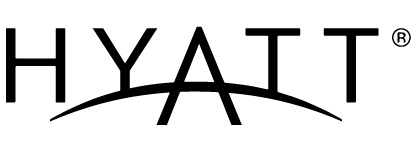Digital Twin Webinar: Understanding the Retail Analytics Glow-Up
Register Here →Global Retailer
How one of the world’s largest retailers created a scalable digital platform that’s now used each day by more than 1.5 million team members in six countries

Operations leaders knew there was an urgent need to rethink the daily floor walk process inside of its thousands of stores across the country, thus giving store leaders a redesigned system through which they would be able to more easily and efficiently identify, manage, and delegate all of the critical, day-to-day tasks required in order to keep their stores running smoothly. Much needed change eventually came via a custom, digital task-management platform that allowed all store leaders and employees to collaborate much more efficiently.


There was a tremendous desire to completely rethink the floor walk process inside of the stores smaller and supercenter locations, thus giving store management a redesigned system through which they would be able to more easily and efficiently identify, manage, and delegate all of the critical, day-to-day tasks required in order to keep their stores running smoothly. Doing so meant creating a new system that allowed store personnel to co-manage critical store operations and key daily tasks in real-time.
Store management was reliant upon an antiquated, analog system that actually had become more of a burden than a benefit. They had reason to question both the efficiency and usefulness of the floor walk, a daily ritual for leaders at each location across the country. In effect, store management was stuck between a rock and hard place — the daily floor walk was critical for daily operations, but it also took too much time, created unnecessary back-and-forth communication, and often created more headaches.
Consequently, store leaders often spent an hour each morning walking the store, jotting down notes, typing them up, and then delegating those tasks to department managers. And when hourly team members were finally assigned those tasks, there was no easy way to determine whether or not the task had been completed. What’s more, there was little-to-no uniformity in the process itself, which created a system full of inconsistency and irregularity.
We quickly found out the existing process was entirely dependent on a manual, inefficient, and rather tedious daily process. Each morning, store leaders would survey the store floor, looking for things which were either out of place or needed improvement. He or she would make note of these needed changes, and then pass them on to department managers, who would then delegate those tasks to hourly team members. This process was almost entirely paper-based, yet one of the most central to daily store operations.
There were a few, obvious limitations to this approach: First, the system itself lacked both accountability and consistency. That is, store management mostly relied on the “honor system” to determine whether or not these tasks were completed. Second, there were no uniform guidelines which governed how these tasks were documented or shared. This created a great deal of variability and inconsistency between stores (there wasn’t a standardized process that could scale across the brand’s massive footprint). Third, the process itself became a “time suck” for store management often creating gobs of unnecessary back-and-forth communication between various groups.
In effect (and largely through no fault of their own), both store leaders and hourly team members were handicapped by both process and tools, and as a result, the primary actors responsible for running day-to-day store operations weren’t working together efficiently.
Many of the leaders making decisions back at headquarters had been former store managers themselves. Thus, there were some inherent biases that weren’t necessarily representative of what was actually happening inside the stores. What’s more, the floor walk process was inconsistent from store to store, so it was difficult to project research or qualitative findings across store locations.
The existing, largely manual process didn’t give store management the type of accountability needed in order to know whether or not critical tasks had been completed. Consequently, the Ops teams back at headquarters also didn’t have access to the type of critical business intelligence that would help them quickly identify inefficiencies across its stores.
Not surprisingly, getting access to store-level and employee-specific data proved difficult. At the time, most of that data was housed on a server inside the store. As a result, connecting to those systems was a significant challenge. Additionally, the sheer volume of available data (thousands of stores across the country) required a database architecture to match the unique, complex needs of such a massive organization.


Timeline: 8-10 Weeks
Key Activities:


Timeline: 12 Weeks
Key Activities:


Timeline: 2-4 Weeks
Key Activities:
Together, we transformed the in-store task management process into one of real-time collaboration, allowing all store teams to work more efficiently together. The end result was a dynamic, centralized digital platform that replaced the antiquated pen and paper methods that store managers had come to rely upon in order to keep track of daily, in-store activities.
We first designed and built the extensive data infrastructure which was needed to house, secure, retrieve, and surface massive volumes of data in real-time. Moreover, the newly-built technical infrastructure allowed other critical systems to more easily and securely consume critical store-level data, providing a next-level business intelligence capability that was previously inaccessible due to system constraints. As a part of this process, we jointly designed a set of data governance practices and policies which were then implemented so as to create standards for how store-level data was to be utilized by all of the various systems involved.
The underlying technical infrastructure gave store leaders the ability to create and assign tasks to other team members in real-time; it gave all staff a clear, accurate, and up-to-date view of exactly which tasks needed to be completed in order to keep the store running efficiently throughout the day. Most importantly, it made the assignment and completion of those tasks much simpler, effectively creating an activity trail which was both documented and trackable at the store level. Lastly, for the first time ever, it gave team members the ability to provide constructive feedback about the application directly within the platform itself, a feature that’s now a requirement for all internal applications.

The average time between task creation and task completion is less than one hour. What’s more, the platform has democratized task management at the store level, reducing the amount of time that store managers spend creating, assigning, and ensuring completion of key operational activities. In fact, the new platform saves management a minimum of an hour of time per day, each day.
Created a daily time savings of nearly one hour for store management
At least 75% of tasks are completed within 24 hours of creation
85,000 notes are created each day by more than 50,000 active US users











